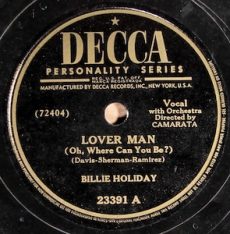
Daily Dose Of Jazz…
Herschel McWilliams was born and raised in Kansas City, Kansas on October 17, 1978. Growing up the son of musicians, a drummer father and pianist and vocalist mother, he was introduced to many musical influences at an early age.
He started learning piano at eight years old and alto saxophone at 10 years old. He joined the band in school and though he learned to play drums from his dad, saxophone became his instrument when he was in the fourth grade. In the 7th grade he stumbled upon Weather Report and Harry Connick Big Band albums. Having great teachers and musicians around him was an important influence on him throughout elementary and high school.
He started gigging the summer after he graduated high school with a community big band. They were working musicians and it was his first call he ever got before heading off to college. After college he has become a beacon of light for jazz in his hometown.
Saxophonist Herschel McWilliams serves on the Board of Directors for Kansas City Jazz Ambassadors, runs his own jazz website, and plays regular gigs in the jazz district of Kansas City as well as other venues in the area.
More Posts: bandleader,history,instrumental,jazz,music,saxophone

Daily Dose Of Jazz…
Martin Jones was born in Hull, England on October 14, 1955. He gained his experience playing trumpet first in school bands, and then Hull school bands with many concerts with orchestra’s, concert bands and a jazz swing band.
Leaving those to form his own bands he started working with his own band commercially in the jazz field in the late Seventies. By 1982 Martin was working professionally on the club and theatre circuits in cabaret. He started a residency at two clubs in the Latin Quarter in Paris. Returning to the UK he was trumpeter, front-man and vocalist at the City of London Tavern. He worked between London and Paris over the next two years, eventually joining the international cabaret group, The English Eccentric Ragtime Four.
He became a session trumpet player and vocalist in the London area. then spent some time working for New York Network Television while he was with this band. In 1987 Jones left the band to tour Europe, worked doing broadcasts on several TV shows and eventually left London and returned to his roots back in Hull.
He soon got work with a regional band called The Casablanca Boys, led six of his own bands and taught trumpet and vocal at The Keech School of Music. He developed a new Jazz Course at Access to Music in partnership with East Riding College as well as Jazz Summer Schools.
Trumpeter Martin Jones has currently published eleven books and continues performing, recording and teaching.
More Posts: educator,history,instrumental,jazz,music,trumpet

Daily Dose Of Jazz…
Isidore Jean “John” Barbarin was born September 24, 1871 in New Orleans, Louisiana. He began learning cornet at age 14, then played in various New Orleans brass bands, like the Onward Brass Band, the Excelsior Brass Band, and Papa Celestin’s Tuxedo Brass Band.
He did not make it on to record until 1945, when he recorded with Bunk Johnson; in 1946 he recorded with the Original Zenith Brass Band. He was a mainstay of the New Orleans jazz scene in the decades around the turn of the 20th century.
Cornet and alto horn player Isidore Barbarin died on June 12, 1960 in New Orleans.
More Posts: alto horn,cornet,history,instrumental,jazz,music

Daily Dose Of Jazz…
Frank Parker was born on August 18, 1919 in New Orleans, Louisiana and began drumming at the start of his career in show business at the age of 5. He gained experience playing with various bands in New Orleans, including The Gin Bandits. He performed as a member of Kid Clayton’s band before relocating to Los Angeles, California. There he hooked up with Teddy Buckner at the Beverly Caverns and the Johnny Otis Band.
Returning home in 1949, Parker played alongside such notables as Fats Domino, Joe Phillips, Roy “Good Rocking” Brown, and Paul Gayten. Nearly ten years later he went on the road with Ray Charles, which was followed up by a spot with the Louis Jordan Band. In 1959 he was back in Los Angeles working with Lou Rawls among others.
By 1970, Parker was working once more on Bourbon Street with Thomas Jefferson, George Finola, Papa French, Santo Pecora, and Wallace Davenport. During his later years, he performed with Laverne Smith at Marriot and Fairmont hotels, toured with One Mo’ Time in 1979, a stage hit about black vaudeville in the early days of jazz. A year later he was playing drums for Percy Humphrey and the Preservation Hall Band.
He ultimately retired in 1990 after suffering a stroke. Just a few months after The Louisiana Jazz Federation presented him with a lifetime achievement award, drummer Frank Parker died on January 23, 2001 in his hometown.
More Posts: drums,history,instrumental,jazz,music

Daily Dose Of Jazz…
James Benjamin Sherman was born on August 17, 1908 in Williamsport, Pennsylvania. He played piano in dance bands in the late 1920s and played on and off with Jimmy Gorham in the metropolitan Philadelphia area. In 1930 he began playing on a steamboat in Alphonso Trent’s band, then played in the 1930s with Peanuts Holland, Al Sears, Stuff Smith, Lil Armstrong, Putney Dandridge, Mildred Bailey, and Billie Holiday.
From the mid- to late ’30s Jimmy played in various swing groups but is best known for his hand in composing the jazz standard Lover Man, co-written with Jimmy Davis and Roger Ramirez, and was first recorded by Billie Holiday
He became the pianist and arranger for The Charioteers in 1938, remaining with the group until 1952. Following this he played primarily locally in eastern Pennsylvania. In 1960 he took up a residency at Miss Jeanne’s Crossroad Tavern in Chester County, Pennsylvania, where he played until shortly before his death.
Pianist and arranger Jimmy Sherman died on October 11, 1975 in Philadelphia, Pennsylvania.
More Posts: arranger,bandleader,composer,history,instrumental,jazz,music,piano




